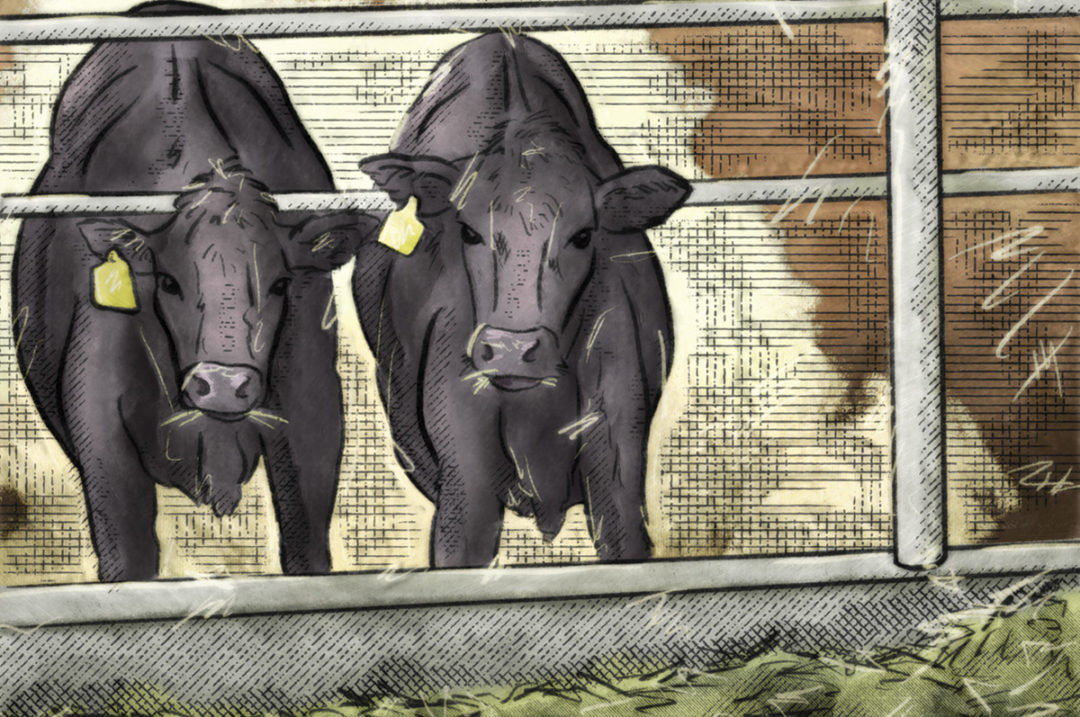Beef cross cattle, or the practice of mating beef bulls to dairy females, has gained significant popularity within the beef industry. This method offers producers an opportunity to enhance performance and efficiency and improve health. However, the path to success in beef-on-dairy calves is not without its challenges. Let's explore some of the hurdles those involved face and discuss potential strategies for overcoming them.
Beef-on-dairy calves are different
Crossbreeding enables producers to capitalize on genetic traits that combine the performance and carcass traits of traditional breeds, ultimately producing calves with enhanced attributes. Beef cross calves have been shown to improve feedlot performance and enhance beneficial carcass characteristics compared with traditional dairy beef. In terms of their upbringing, during the nursery phase, beef cross calves are raised similarly to dairy calves. During this phase, attention to nutrition, ensuring a balanced diet that supports optimal growth and development is critical to setting these calves up for success. After the growing phase, these calves generally will enter the feedlot or may go to grass as stocker calves. The performance of beef cross calves is often notable, reflecting the advantages gained from combining the strengths of different breeds. These calves frequently exhibit improved gain, feed conversion and overall productivity.
Finally, when it comes to carcass, beef cross calves often yield enhanced carcass traits, resulting in favorable meat quality attributes such as tenderness, marbling and flavor. Furthermore, their carcasses may exhibit favorable yield characteristics, including higher dressing percentages and enhanced muscling compared with traditional dairy beef, which is highly valued in the beef industry.
Beef cross cattle are becoming a popular choice for beef producers due to their desirable traits such as improved growth rates and meat quality. However, there are concerns with these calves, including increased transportation, which can increase stress, longer days on feed and the potential for increased acidosis and rumenitis, leading to a higher risk of liver abscesses. Liver abscesses in beef cross cattle can be attributed to an acidic and unstable rumen environment that may start at a young age.Packers are concerned about liver abscesses
From the perspective of packers, one of the more pressing issues encountered with beef-on-dairy calves revolves around the occurrence of liver abscesses. Liver abscesses, characterized as a bacterial infection within the liver, can lead to scarring of the liver, representing a loss of liver function – and in extreme cases, active infection at harvest poses significant challenges to the beef industry. This affliction not only hampers performance but can increase trimming, reducing carcass yield and slowing the production output, exerting a substantial economic loss for packers.
Bunk management, reducing stress, ensuring access to fresh, clean water and mitigation of heat stress can help reduce incidences of slug feeding, a main contributor of acidosis. Proper processing and mixing of roughages and grains into a high-energy diet can also reduce inconsistent feed intake. Furthermore, maintaining fresh feed in feedbunks, clean water troughs and dry/shaded areas where cattle congregate is crucial for maximizing performance.
For beef-on-dairy steer producers, liver abscesses pose a significant concern. However, implementing appropriate management strategies, utilizing ionophores and approved additives, adding a postbiotic and ensuring meticulous sanitation practices can all help to reduce the incidence of liver abscesses. With diligent management, beef cross steers can thrive in a state of optimal health and productivity.
Proper nutrition can help overcome challenges
When it comes to the prevention and management of liver abscesses in beef cross cattle, nutrition emerges as a pivotal factor. A well-rounded and carefully curated nutrition plan not only fosters a healthy rumen environment but also diminishes the risk of acidosis while promoting the proliferation of beneficial bacteria. A diet balanced to match the production phase is one key to upholding the well-being of beef cross cattle. This entails ensuring adequate levels of protein, energy, fiber, minerals and vitamins in their diet. By adhering to a balanced diet, not only can a healthy rumen environment be maintained, but overall health can be fortified, preempting the onset of liver abscesses.
By prioritizing the optimal nutrition of beef cross cattle throughout their journey from calving to consumption, the detrimental impact of liver abscesses can be reduced. Through a meticulous focus on bunk management, the integration of proper feed additives with expert guidance and the provision of a well-balanced diet, beef cross cattle can continue to add value to the beef industry.
In summary, while crossbreeding offers a multitude of advantages to beef producers, it is crucial to acknowledge the challenges that may arise. However, by implementing strategic measures, these obstacles can be effectively addressed. The first step lies in the proper selection of matings, ensuring the compatibility of traits that align with the desired goals. Additionally, diligent monitoring of herd health becomes paramount, allowing for early detection and prompt intervention when necessary. Lastly, implementing a marketing plan that accentuates the benefits of crossbreeding can amplify the value proposition for farmers, paving the way for herd health, productivity and profitability.







